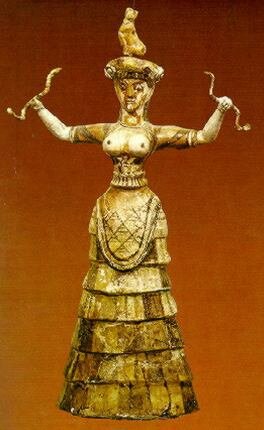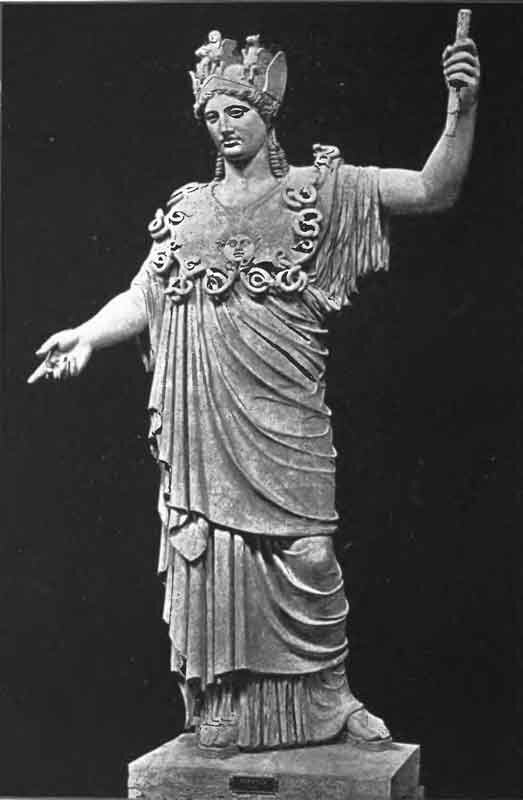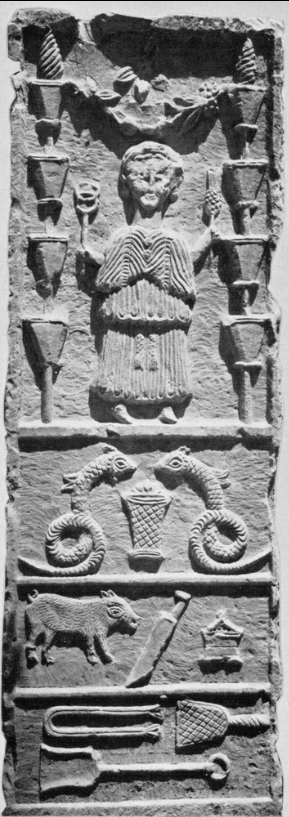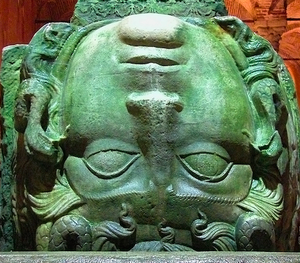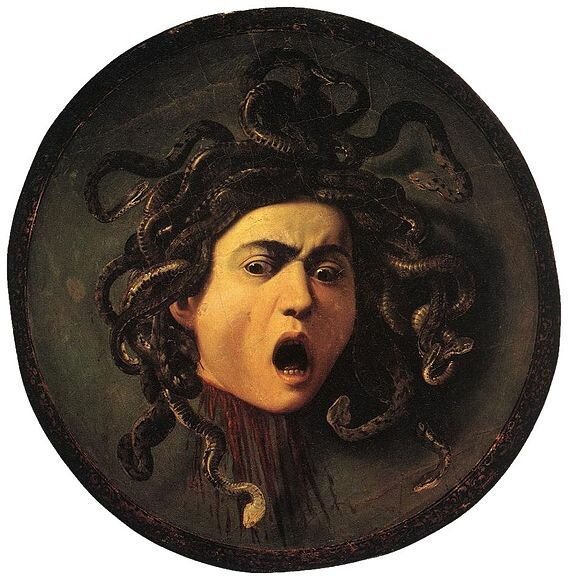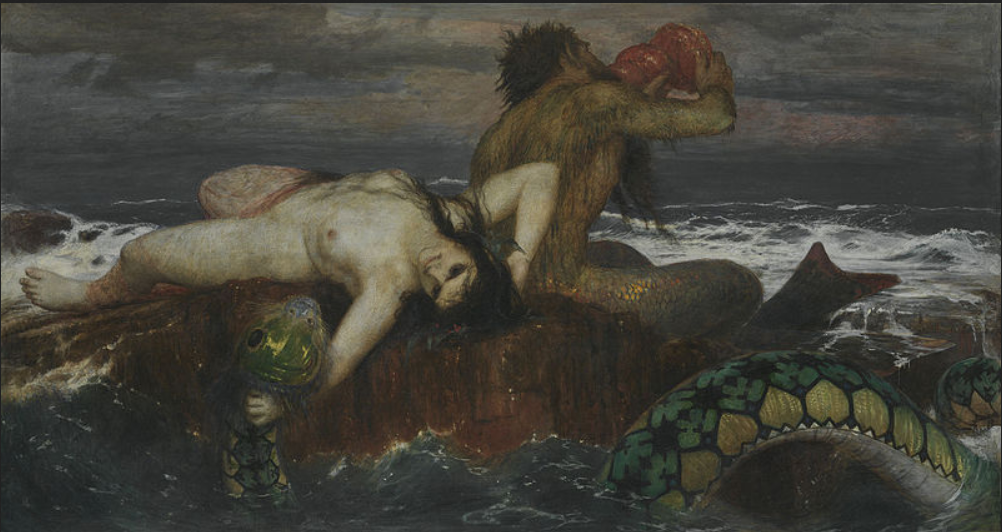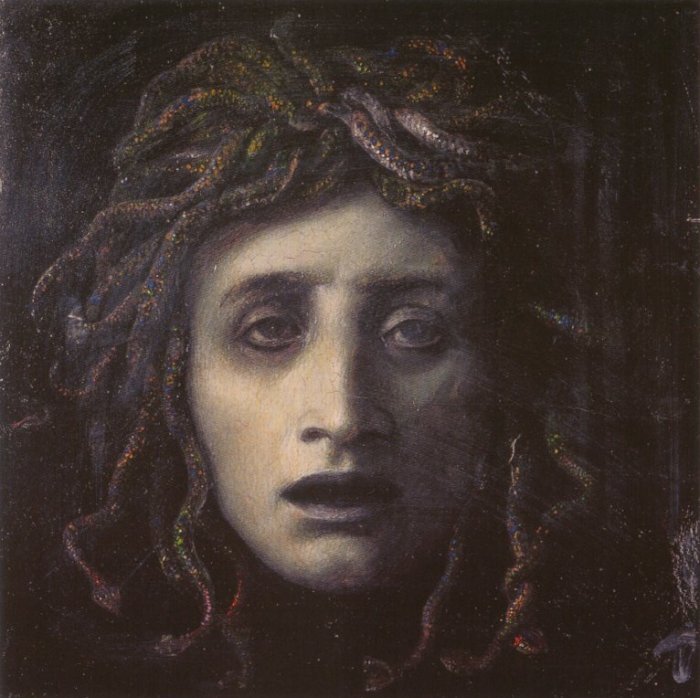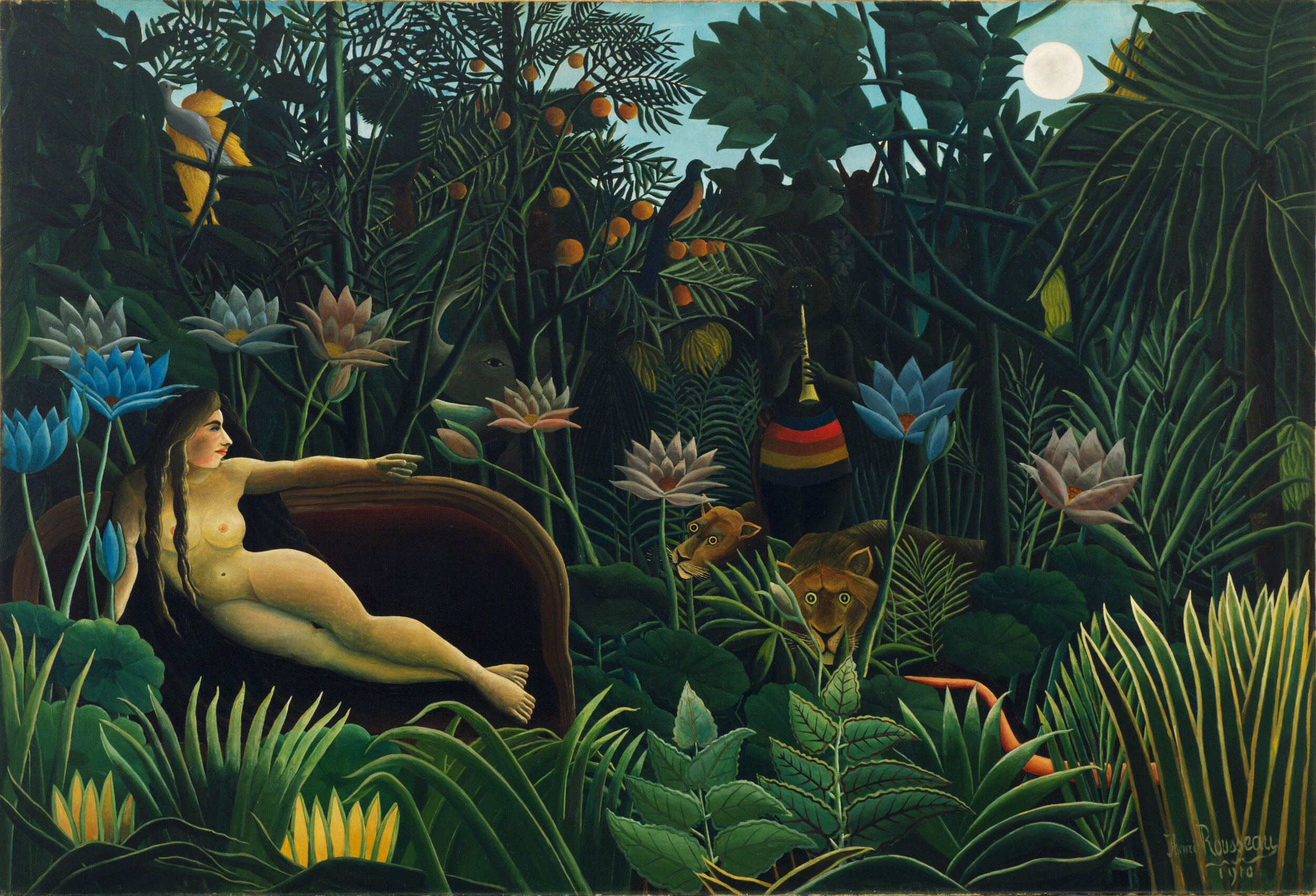Image collection - Women. Snakes.
“The young men whom the Mother selects for her lovers may impregnate her, they may even be fertilitygods, but the fact remains that they are only phallic consorts of the Great Mother, drones serving the queen bee, who are killed off as soon as they have performed their duty of fecundation. For this reason these youthful companion gods always appear in the form of dwarfs. The pygmies who were worshiped in Cyprus, Egypt, and Phoenicia—all territories of the Great Mother—display their phallic character just like the Dioscuri, the Cabiri, and the Dactyls, including even the figure of Harpocrates. The attendant serpent—apart from its numinous nature—is likewise a symbol of the fertilizing phallus. That is why the Great Mother is so often connected with snakes. Not only in Creto-Mycenaean culture and its Greek offshoots, but as far back as Egypt, Phoenicia, and Babylon and similarly in the Bible story of Paradise, the snake is the companion of woman.” (Erich Neumann, The Origins and History of Consiousness p.47)
A continually updated collection of art (mostly paintings) representing women with snakes. Including famous mythological characters such as Medusa, Eve the first woman, Athene, Lillith and Demeter. I am still looking for art depicting Eurynome as she is described in the ‘Pelasgian creation myth’ in Robert Graves book ‘The Greek myths’. If you have any leads let med know.
Edit 180321 note from aras org on minoean snake godesses
“The association between the Goddess and the snake seems to have begun with the emergence of Minoan civilization. An Early Minoan II vessel depicts the Goddess with serpents wrapped around her neck and torso (3Cb.001). This earliest known form of the Snake Goddess has been interpreted as showing her in the role of household genius. Concerning this protective function, Nilsson writes, "In modern Greece, the genius of the house appears in the guise of a snake, which is believed to have its permanent dwelling in the foundations of the houses and not infrequently some crevice or hole in the rough cottage floor is regarded as the entrance to its home. Around such holes, peasants have been known to sprinkle bread crumbs. A libation of milk is sometimes poured into the hole, and if the snake really appears it is greeted with silent delight or with a few words of welcome silently spoken. On no account must 'the master of the house' or 'genius of the place', as it is sometimes called, be frightened, still less hurt."As Minoan civilization increased in complexity, the role of the Goddess seems to have undergone a corresponding transformation: she now becomes the protectress of the palace, the nucleus of Minoan culture”
In chronological order.
Minoan goddess of snakes, Crete.
Athene Farnese, Collezione Albani. National Archaeological Museum, Naples
Roman copy of a Greek original by Pyrrhos from the school of Pheidias (5th century BC). image + info: http://www.hellenicaworld.com
Close up, Athene Farnese. Image: Twitter @johntrikeriotis
God and Godess maybe, ca. 550-525 B.C., Greek Archaic Period, Mainland Greece, Found at Chysapha, Laconia, image: ARAS.
Punic-Roman relief, ca. I, Tunis: Mus. du Bardo. image: ARAS
Head of Medusa. Second half second century, Tepidarium of Dar Zmela house, Archeological Museum of Sousse. Image: the dailyartmagazine.com
Medusa in Istanbul basilica cistern, c. 542, image: acetestravel.com
Fall of the Damned, by Dieric Bouts the Elder, oil painting, ca. 1450, the Netherlands., Palais des Beaux-Arts de Lille. It also has dragons!
Giampetrino, Detah of Cleopatra, 1500, Wikipedia Commons
Michelangelo Merisi da Caravaggio, Medusa, 1595–1598, Uffizi, Florence
Peter Paul Rubens, Medusa, c. 1618, Kunsthistorisches Museum Vienna
William Blake, Eve tempted by the serpent, 1799-1800, image: wikipedia commons
William Blake, illustration Dantes divine comedy
William Blake, Moses Erecting the Brazen Serpent (Numbers XXI, 9), about 1800 -03, image:wikipedia commons
Arnold Böcklin, "Triton and Nereid," 1874, oil on canvas, 105.3 x 194 cm (Bayerische Staatsgemäldesammlungen, Sammlung Schack, Munich), image: wikipedia commons
Gustave Moreau, Hercules and the Lernaean hydra, 1875-1876, (Art Institute of Chicago), image: wikipedia commons
Arnold Böcklin, Medusa, circa 1878, Germanisches Nationalmuseum
Jean-Antoine Marie Idrac , Salammbo, modelleret 1881, stobt 1903. Photo by me, from the exhibition ‘The Road to Palmyra’ at Glyptoteket in Copenhagen 2019.
Franz von Stuck, Inferno, 1908, Metropolitan. image: metropolitan.org. Love von Stuck, also very nice frameing on this one.
Henri Rousseau, The dream, 1910, image: wikipedia commons
Leonora Carrington, from a collection of 9 etchings wit the title Una vida surrealista, 1917
Sarah Lucas, NUD CYCLADIC, 2010, gladstonegallery.com
Sarah Lucas, NUD CYCLADIC, Christchurch Gallery
Alexander Tovborg, Eva, 2019, image instagram - @alexandertovborg
